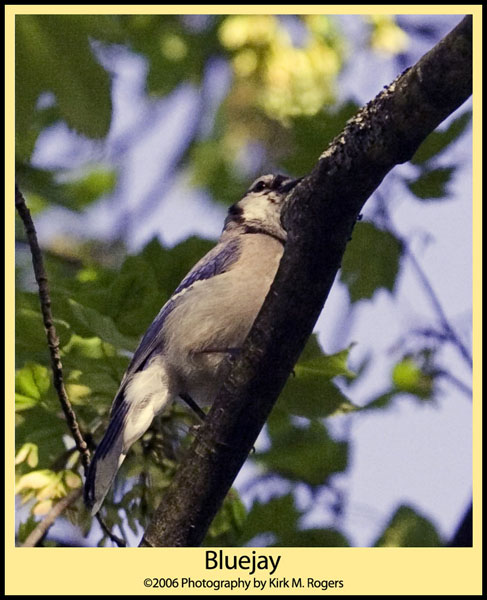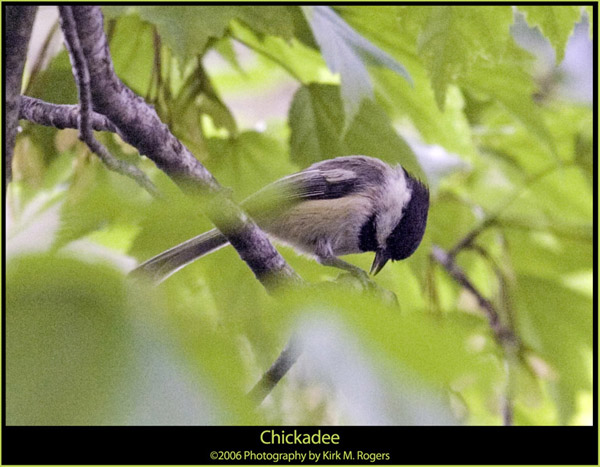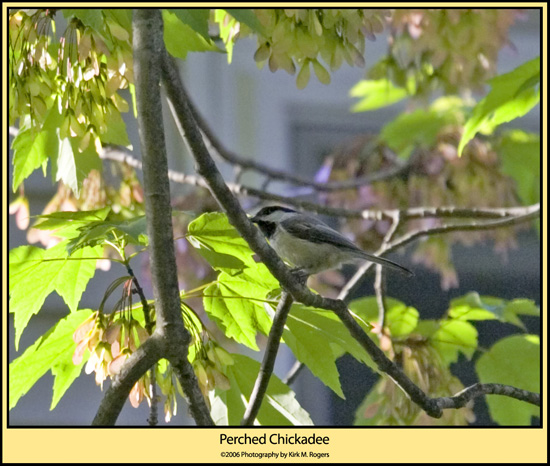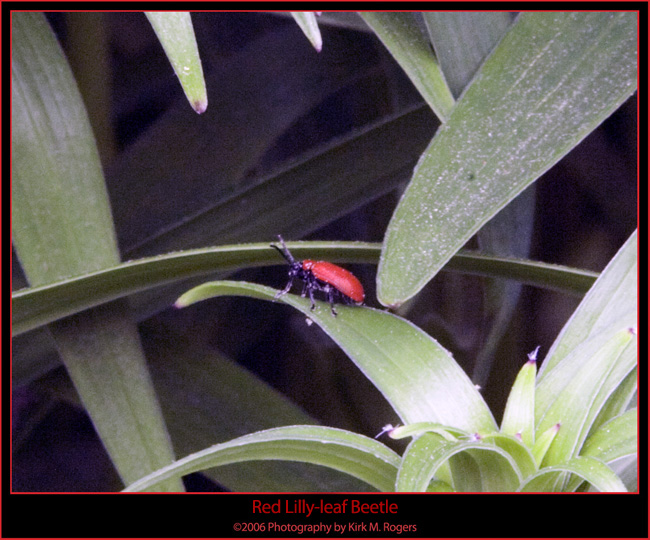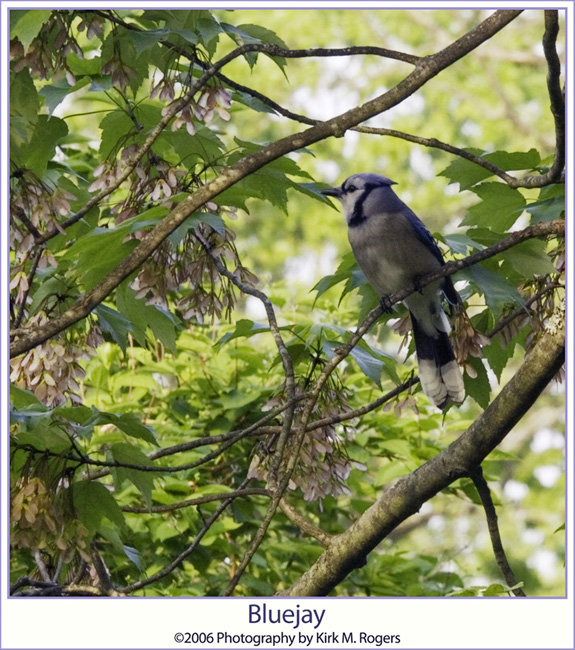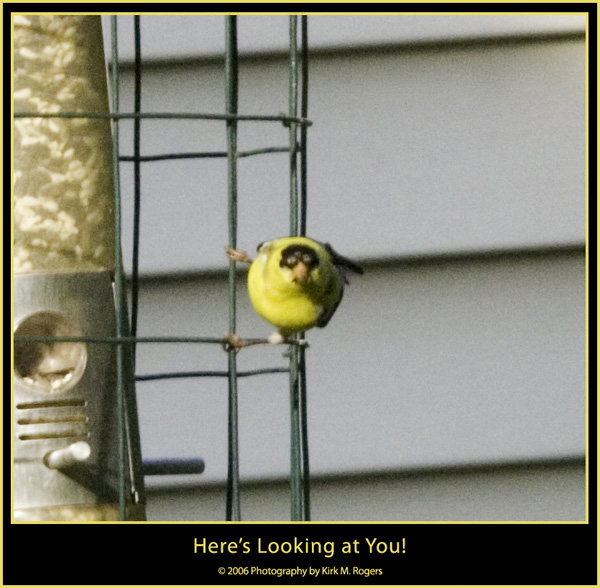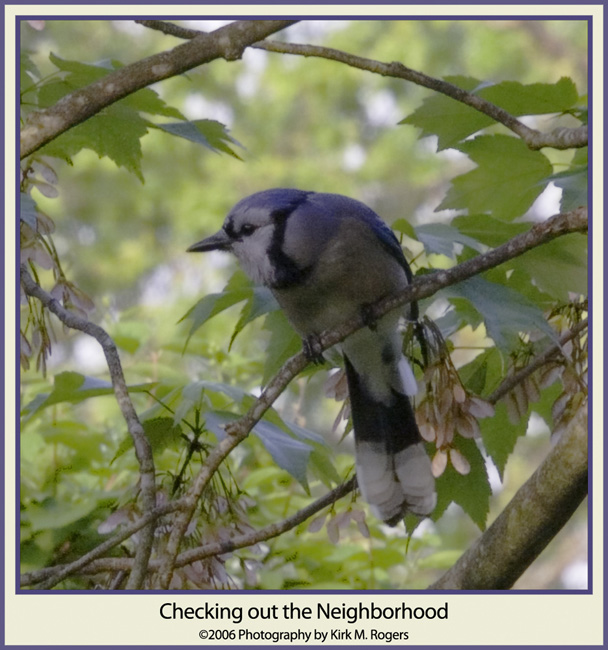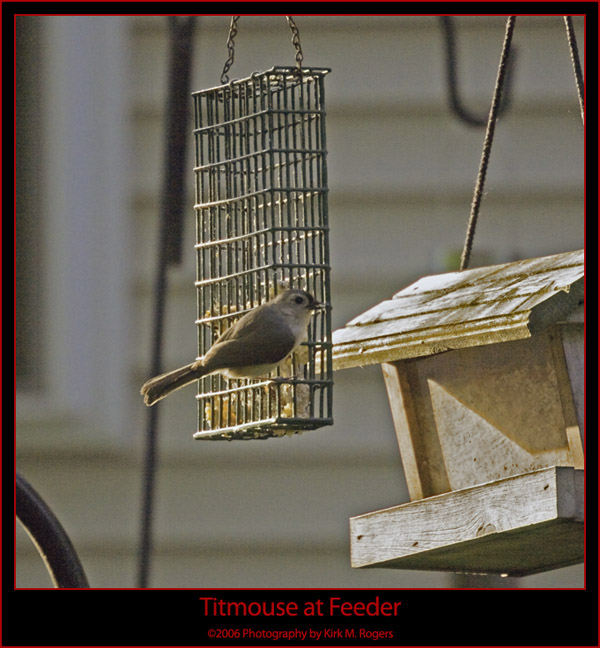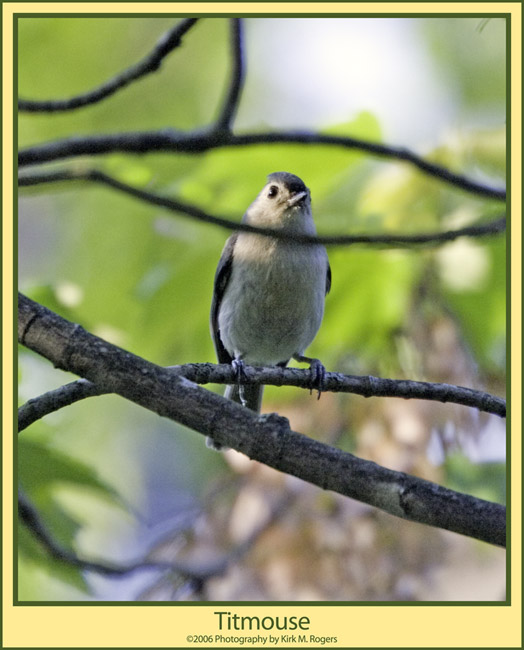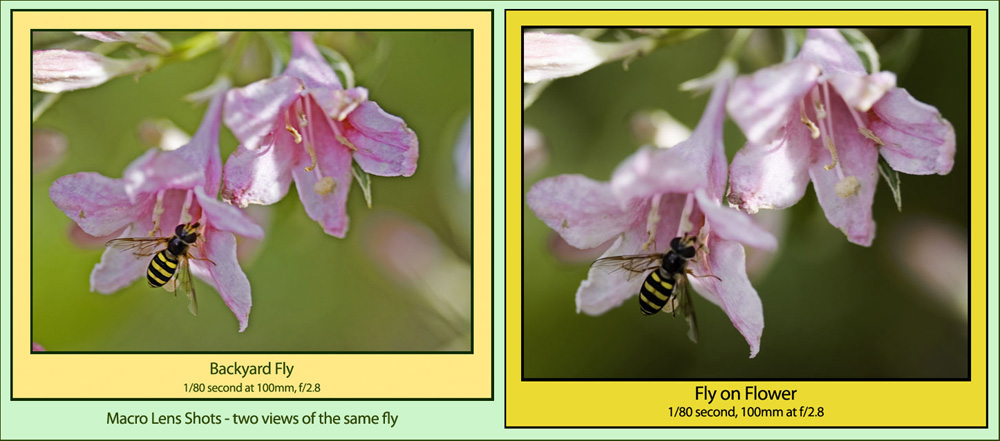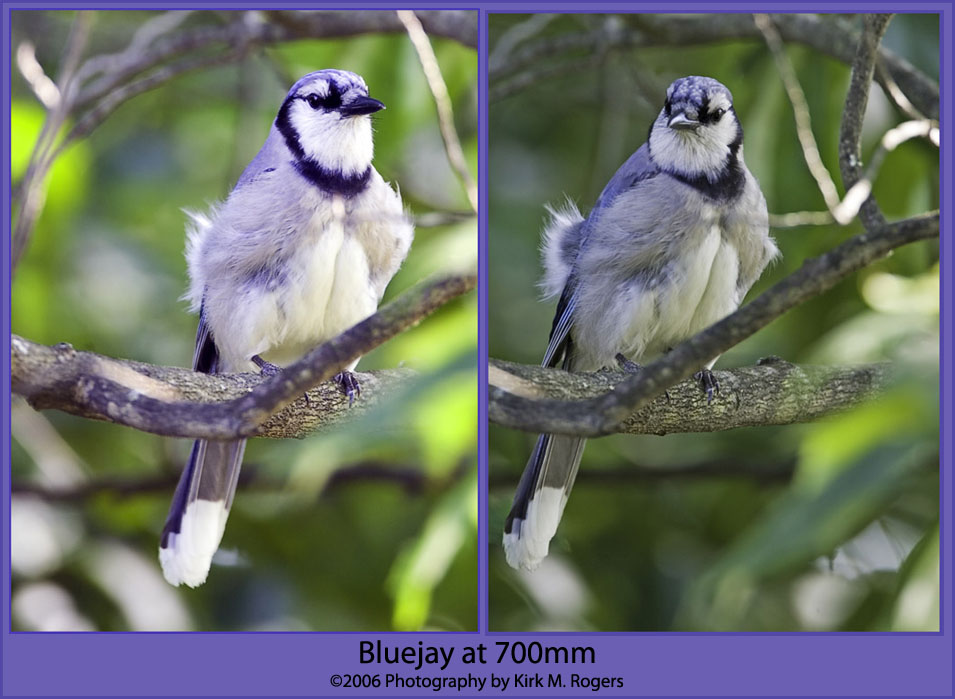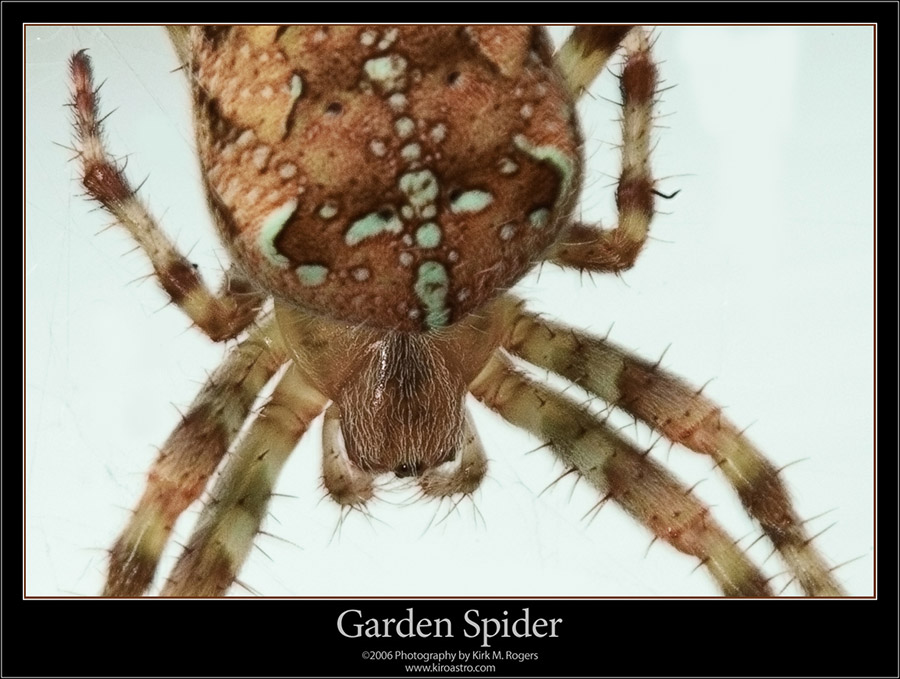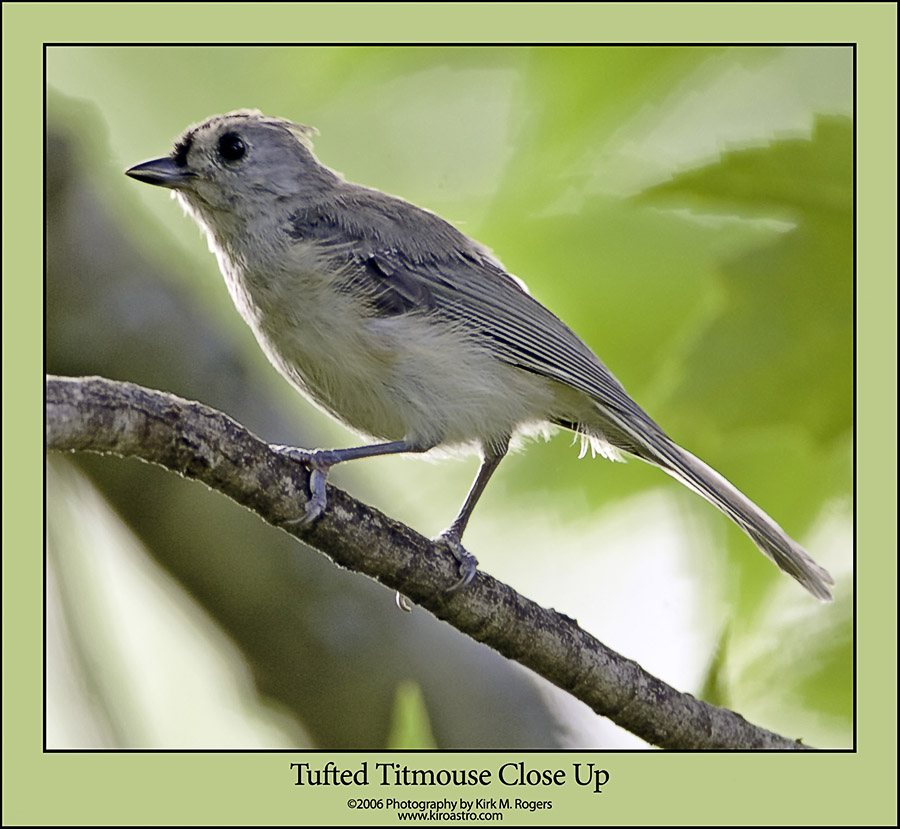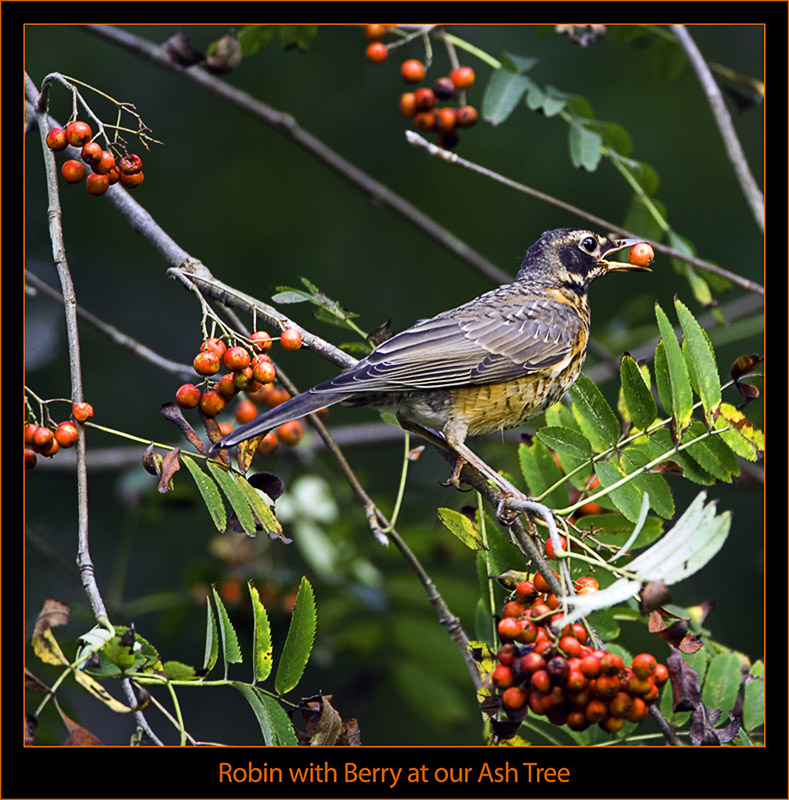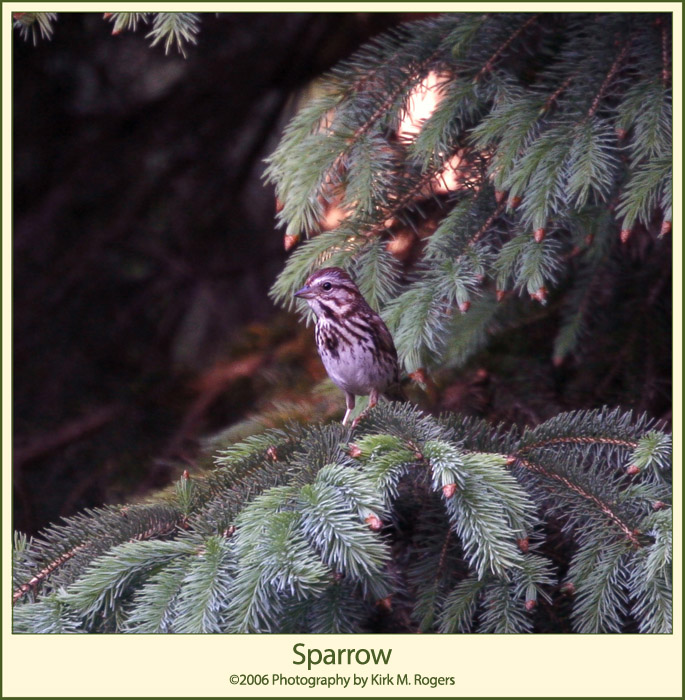
|
This is my favorite of the above group
|
I don't have any idea what this insect is, but that's his head sticking out in this view. This is a fine example of
camouflage in nature; had he not popped his head out to look around I never would have known it was alive.
Please drop me an email if anyone reading this can identify this insect.
|
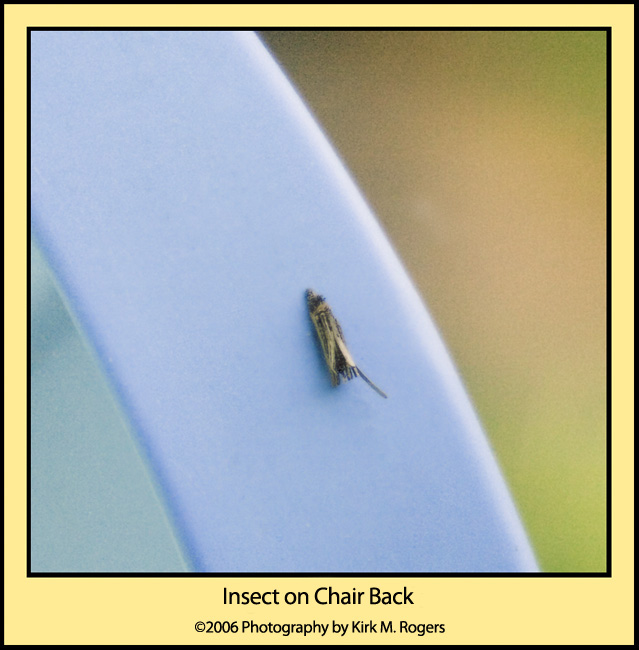
|
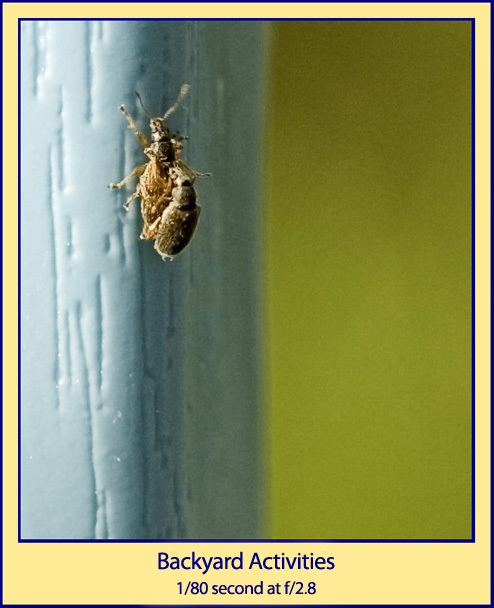
|
Some New Shots... Taken with my Canon EF 100mm f/2.8 Macro Lens
I hope this image doesn’t offend anyone’s sensibilities, but I was walking in the backyard looking for things to photograph and decided to grab a chair. When I walked over
I viewed this speck, took a closer look and this is what I found… I had my macro lens on the camera and took several shots and this one happened to be close to good focus.
I was around eight to ten inches from the pair at that time. After all, you don’t see something like this often, I least I never have…
This was imaged with the camera handheld and the lens wide open in Aperture Priority. Getting a final of this file wasn't easy, even shooting in Raw format and
getting the subjects at the largest possible size one doesn't have much to work with when enhancing. What is being viewed here is the actual Raw file size from the sensor.
You can get an idea of the image scale of these creatures by looking at the detail on the plastic chair they're on; they were quite small.
|
The composite below represents the only other recent test shots I took with the macro lens. It was a windy day and the plantings were blowing around wildly so I didn’t continue.
These fly images were shot with the lens wide open at f/2.8 & 100mm, ISO 100 rating, with the camera mounted on a monopod. This support wasn’t actually much
help; I got down low on my knees to try to image the fly at the level of the flower about twelve inches away between the wind gusts.
This photograph, taken as night was falling on an overcast day, yields the familiar silhouette of a Robin treetop high overlooking the area. Just a glimpse of color
can be viewed in this 400mm shot taken with my 70~200mm f/2.8L lens and 2X extender. I debated including this image but I thought it was different and a nice effect.
Robin's are one of the most easily recognized bird shapes as they are so common.
|
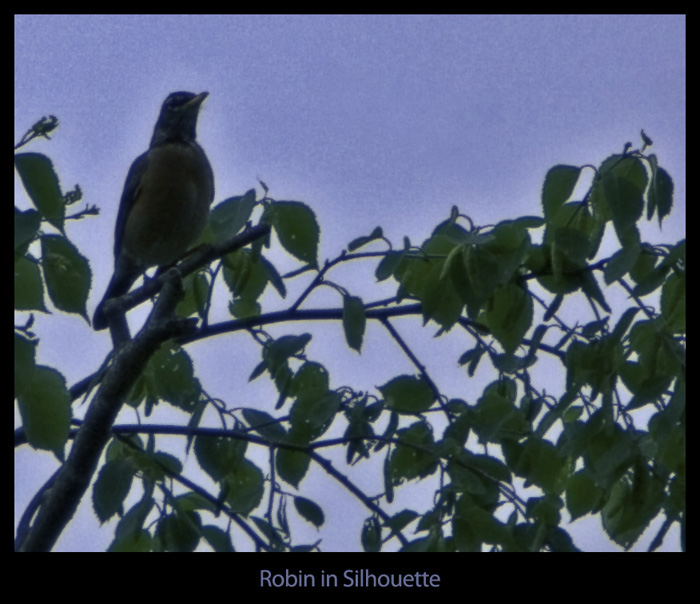
|
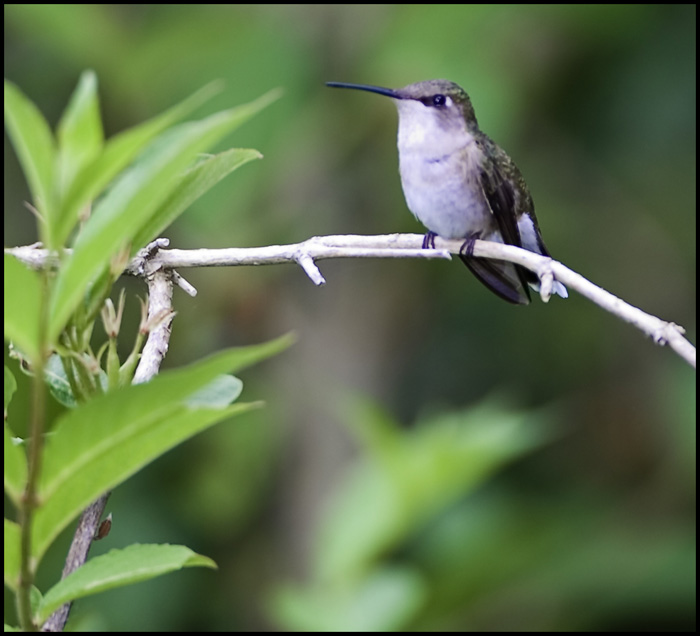
|
Added Shots, July 2006... Taken with my Canon EF 500mm f/4L IS Lens
The first day I set up in the backyard with my new 500mm lens, this hummie was watching me. After I was prepared, I swung the lens around and exposed
a series of her perched on a branch. Both of these shots are at 1/30 second at f/4.
|
This is another of the same Hummingbird. I liked both so uploaded the pair. The extra focal length makes a significant difference in bird imaging, especially
with subjects as small as a Hummingbird. This bird didn't sit still long but she was curious as to what I was doing and watched intently for several seconds.
|
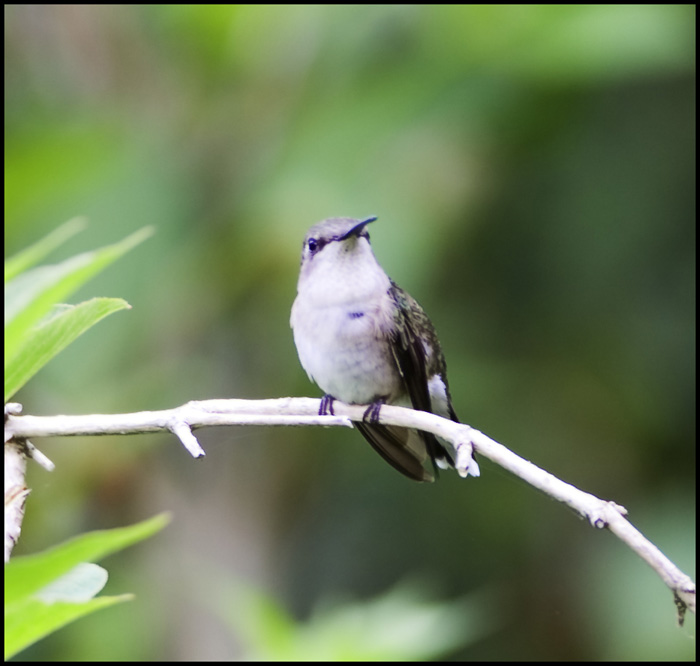
|
Now this is more like what I’ve been planning to achieve… This Bluejay was photographed at 1/15 second at 700mm. Compare these images to those posted at the beginning of this page.
The image scale here is much larger and due to shooting conditions with good lighting, the exposure was pretty much right on target. Very little enhancing was done to this pair;
what you see is close to the RAW image format off the camera. This is the type of imaging I intend to keep up and improve upon.
Added Shots, September 2006
It’s been several months since I added to this section but I’ve been imaging frequently in the yard and elsewhere all the same. It was getting to the point where I was shooting
nearly everyday somewhere depending on my work schedule, because as is said, ‘practice makes perfect’… This applies to image capture as well as enhancing at the computer. This section
consists of finals from several
different photographic sessions around my home. I believe you’ll really view the improvements in technique.
The Canon 500mm f/4L lens is by far my favorite for imaging birds. Getting close is the key and this lens with the 1.4X extender makes a great deal of difference.
Shooting detailed images of perching birds is no easy task, give it a try and find out. This group of shots was imaged with the 500mm except for the spider shots.
These were imaged with my 100mm f/2.8 Macro lens at a distance of about six or eight inches.
The first group is of Garden Spiders. These are amazing creatures and where they're nobody’s favorite, they have a beauty all their own. Look at the image with the lab
color added which enhances the exquisite markings of this spider. I read in the National Audubon Society ‘Field Guide to Insects and Spiders’ that garden spiders
spin a new web each day. And each day they eat the old one – talk about recycling…This group was exposed at slow shutter speeds - 1/8th, 1/15th to even 1 second.
I used flash for one session as it was late in the afternoon.
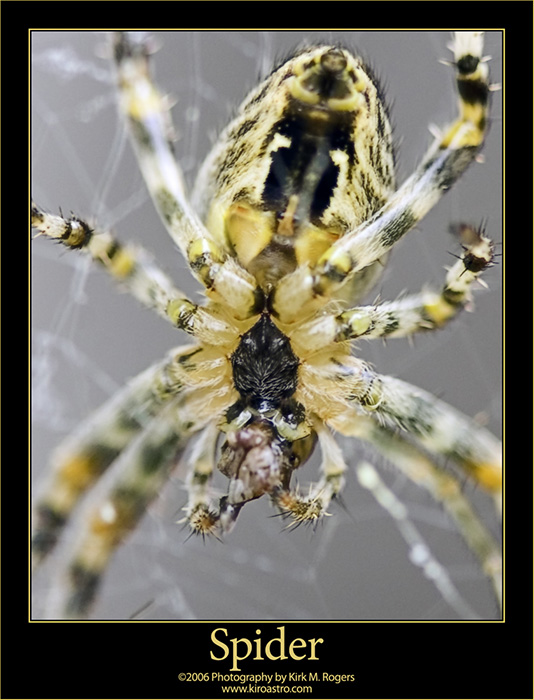
|
Garden Spider by our back door. Imaged with my Canon EF 100mm f/2.8 Macro Lens
at 1/15 second, ISO 320 rating
|
Another Garden Spider with a web near the first. Imaged with my Canon EF 100mm f/2.8 Macro Lens
at 1/8 second, ISO 320 rating
|
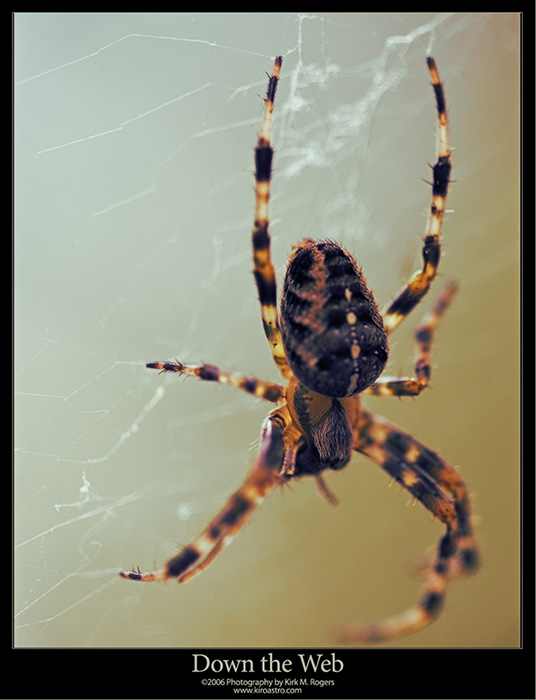
|
The next two shots are the same image with two different enhancing methods. I was experimenting in the Pixel Genius program, PhotoKit Color2 and liked this so well
I decided to create a print of the image and post it here. The second image is a more conventional approach.
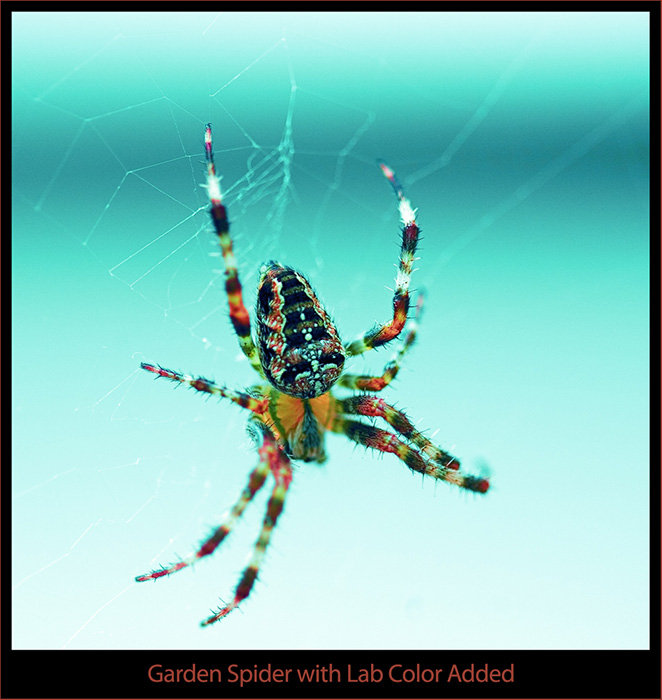
|
Garden Spider with color added. Imaged with my Canon EF 100mm f/2.8 Macro Lens
at 1/60 second, ISO 200 rating; no flash employed
|
The same Garden Spider image more true to natural color. This image was taken on another day from the first group
|
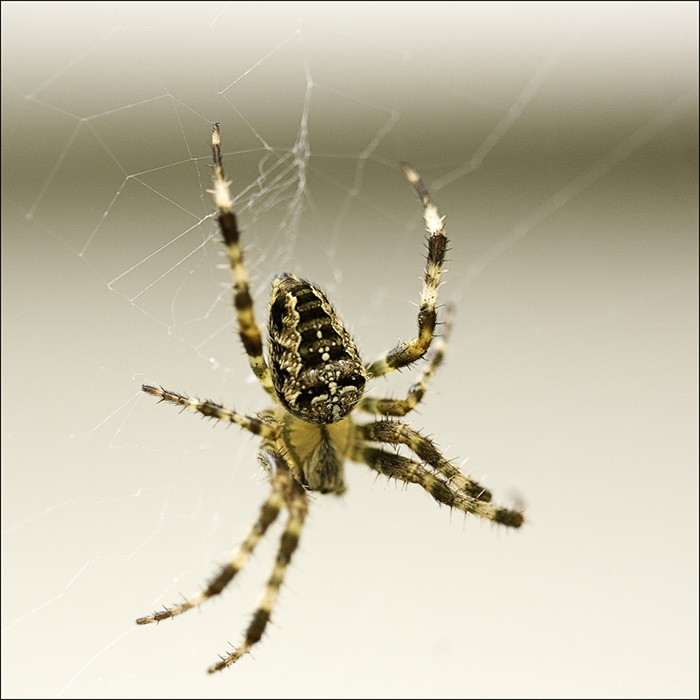
|
The spider shot below was a departure from what I’d been doing on the others. This spider close up was imaged at ISO 200 rating at a focal length of f/18 and
exposed for one second. The camera was tripod mounted and was employed for all the spider shots at slow shutter speeds. I used my flash,
a Canon 430EX Speedlight for this image. The markings in the shape of a cross are a key identification point for garden spiders.
The following group goes back to bird images shot in our backyard. The first group were imaged in late August and the balance in September. We’ve had a great deal of activity
with the advent of fall, but the species of birds is somewhat typical without much variation. Chickadees, the ever popular Tufted Titmouse, Downy and some Hairy
Woodpeckers, many Goldfinches at the thistle feeders – sometimes a dozen in a group at one time, differing varieties of Sparrows, Bluejays, American Robins, doves and some
White Breasted Nuthatches. We also have an obnoxious group of Crows nesting nearby and they wake us up often at or just before sunrise.
These images were shot in RAW format and the close up views in particular makes terrific prints. Many were imaged just within the focus range of my lens extended at 700mm
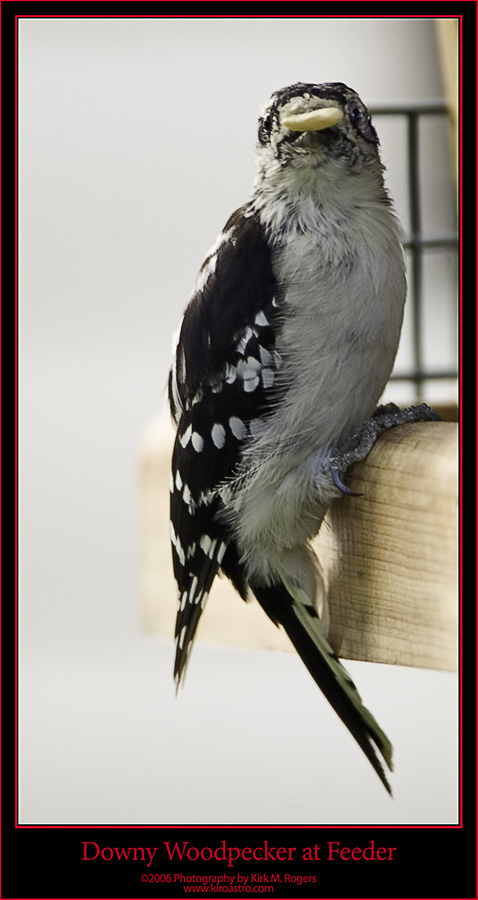
|
I caught this woodpecker at our feeder with a mouthfull...
|
A Chickadee perched to take a look before heading to the feeder
|
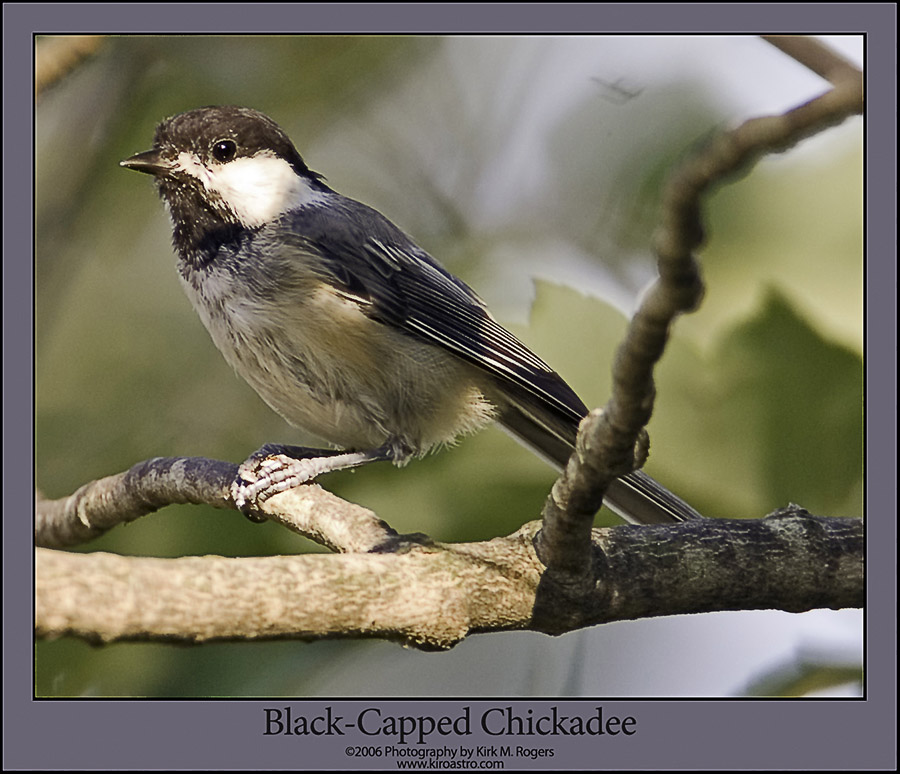
|
This Titmouse was checking things out and patiently waiting to make the short flight into feed
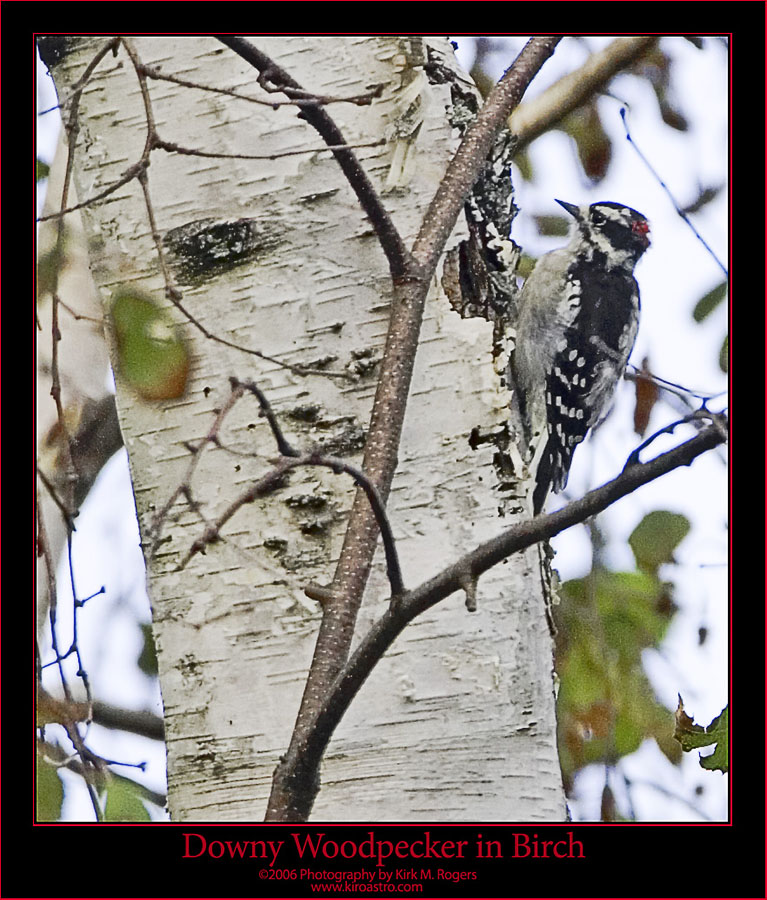
|
This woodpecker was imaged in our neighbor's tree
fairly far away from my set up.
|
A group of the local American Crows. These are somewhat the bain of the neighborhood with their noisy behavior
|
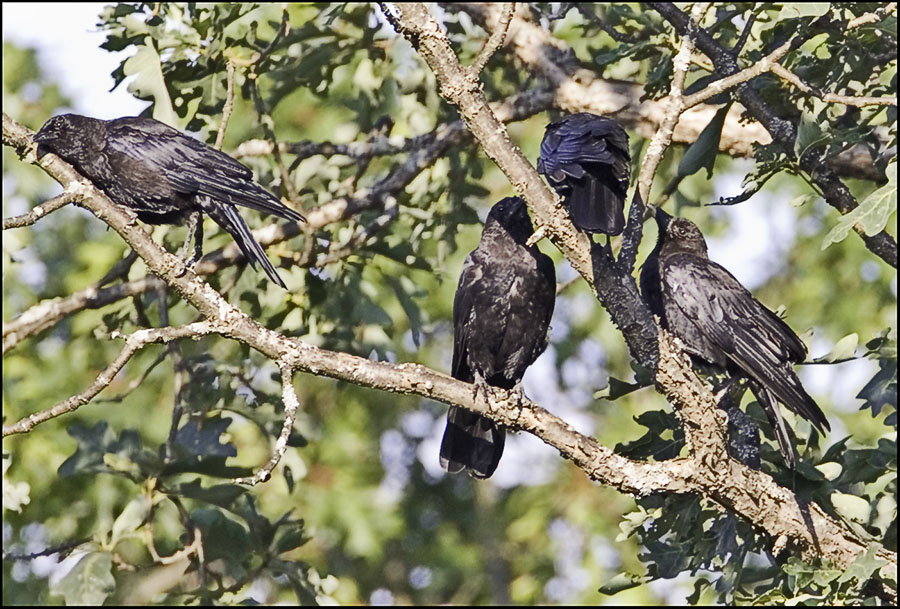
|
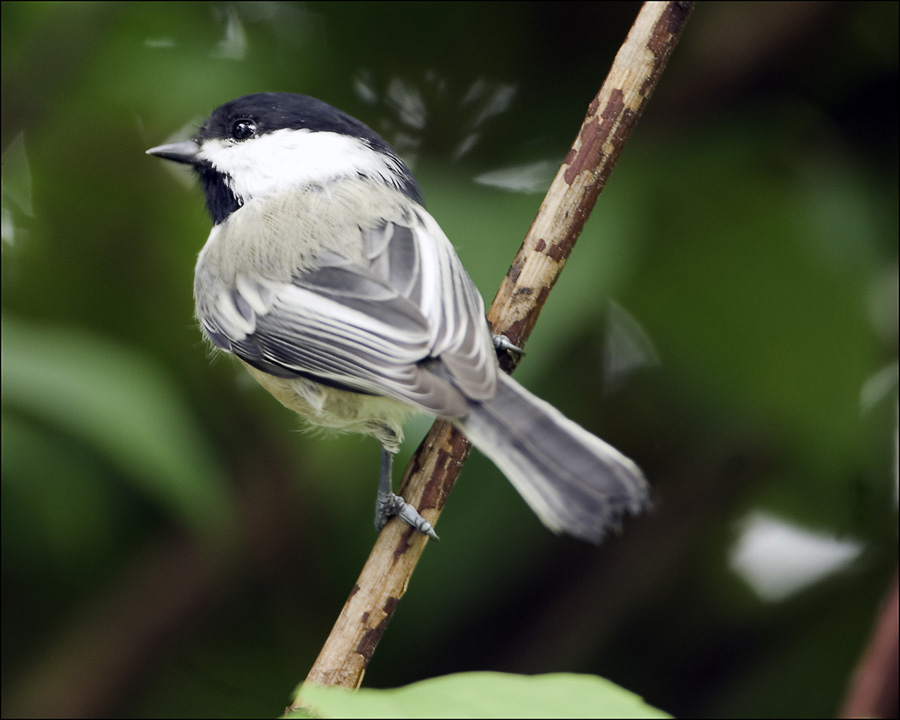
|
One of our many Chickadee visitors
|
A perched Song Sparrrow checking out the backyard feeders
|
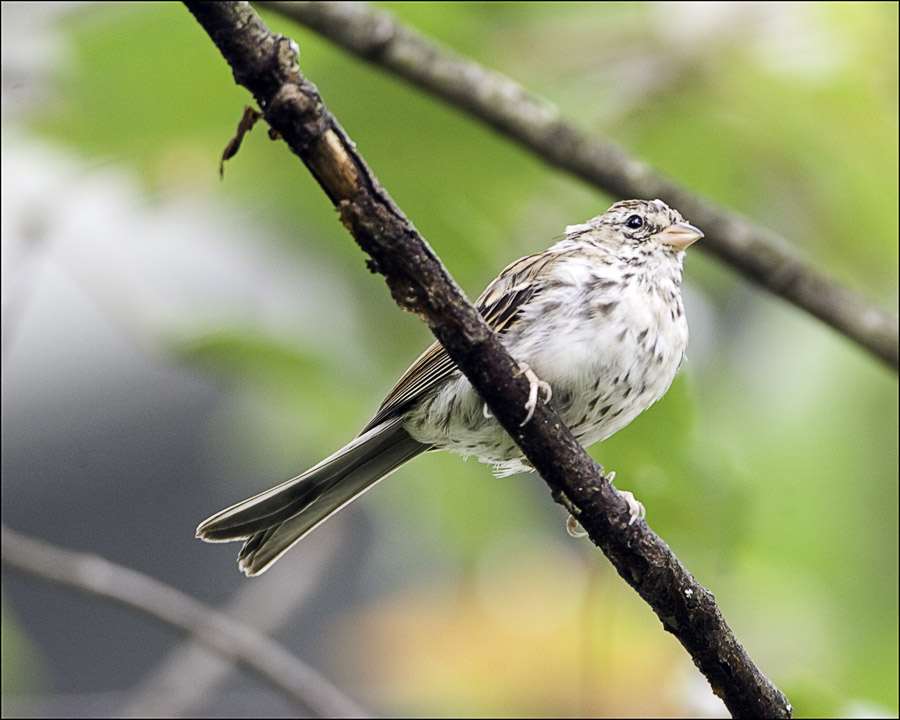
|

|
We have many Goldfinches at our feeders and I never tire of imaging them
|
This woodpecker is a frequent visitor to our backyard and is actually elusive to image. These birds appear shy from what I can see
and don't prefer company
|
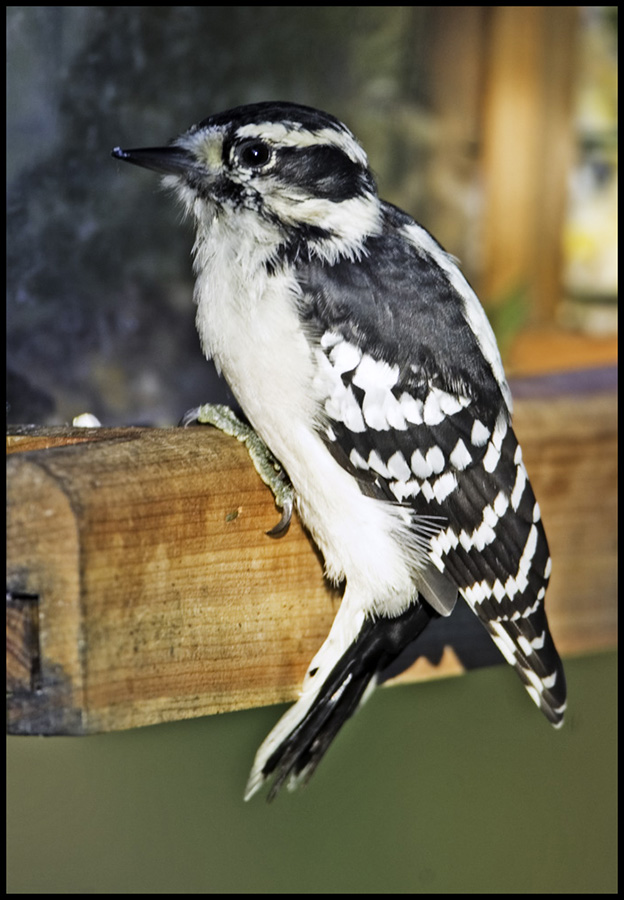
|
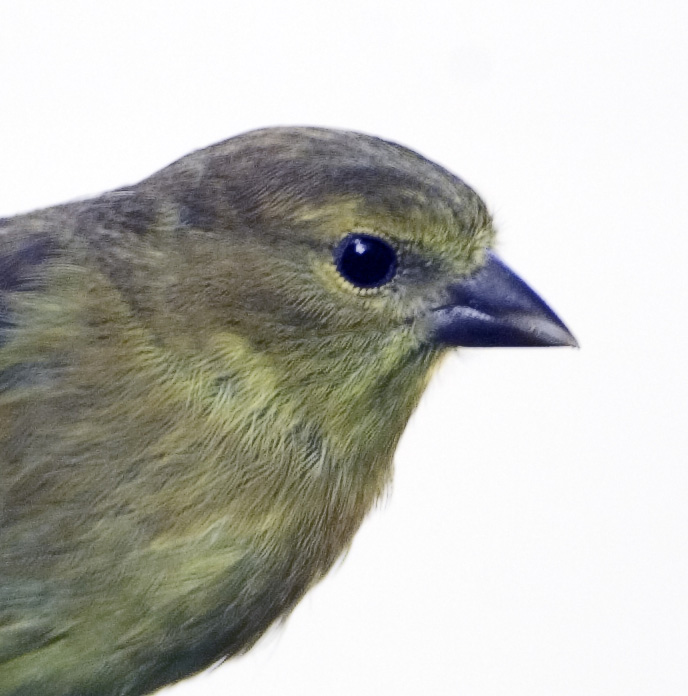
|
A close up headshot of a female Goldfinch
|
Doves come regularly to our yard. Being larger than a songbird, they don't fit well in the feeder, so they wait until the others birds
make a mess and drop seeds on the ground and feed from there. I like this image and the bird's expression; even a common dove has great beauty.
|
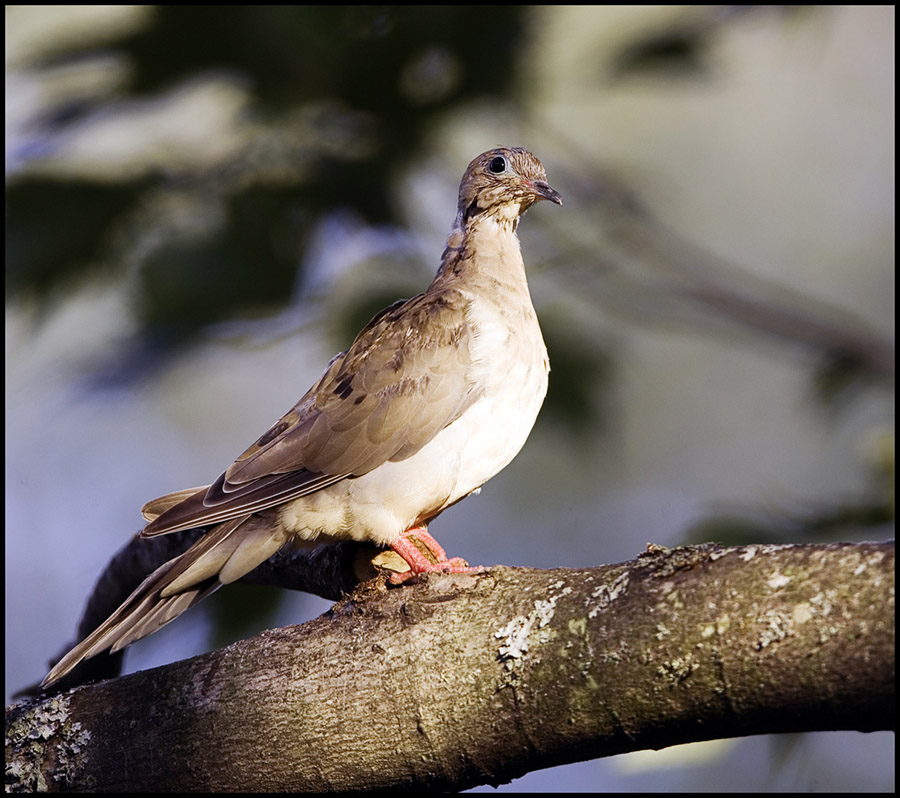
|
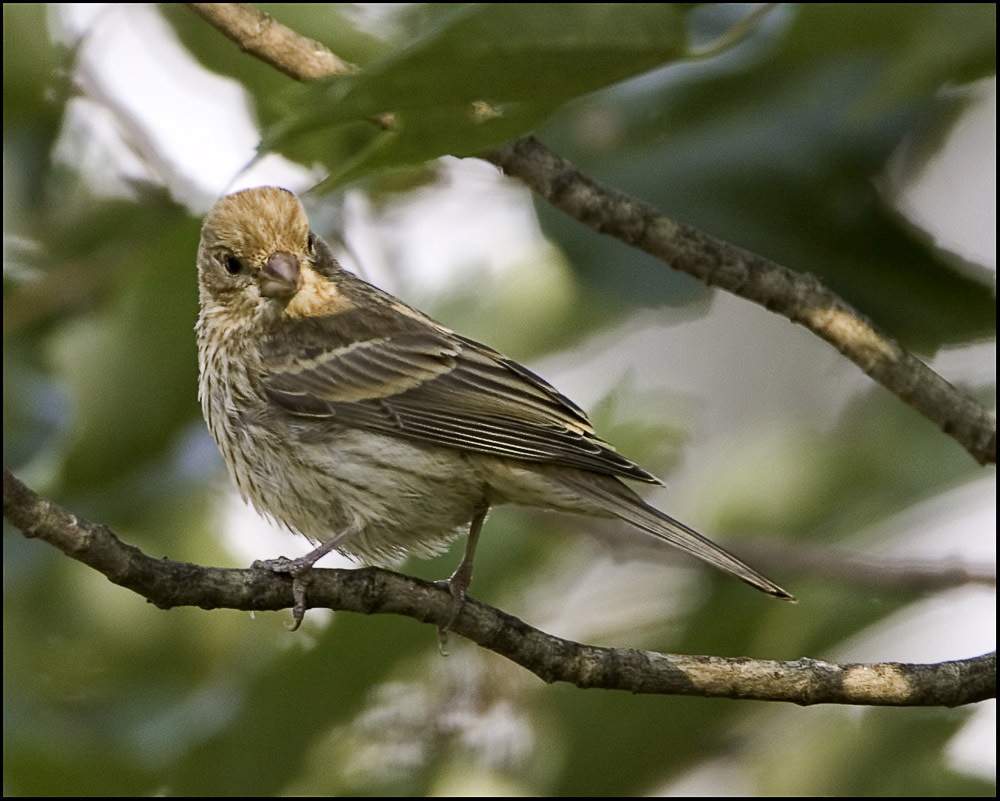
|
A Sparrow close up
|
Another dove photographed on the ground by or feeders. This isn't the same bird as in the image above
|
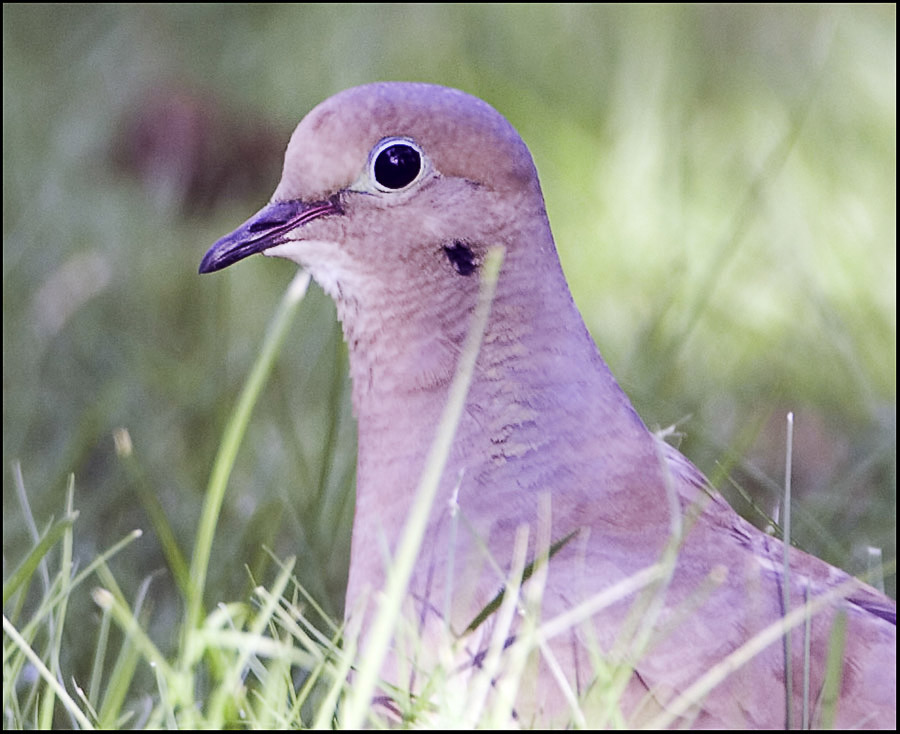
|
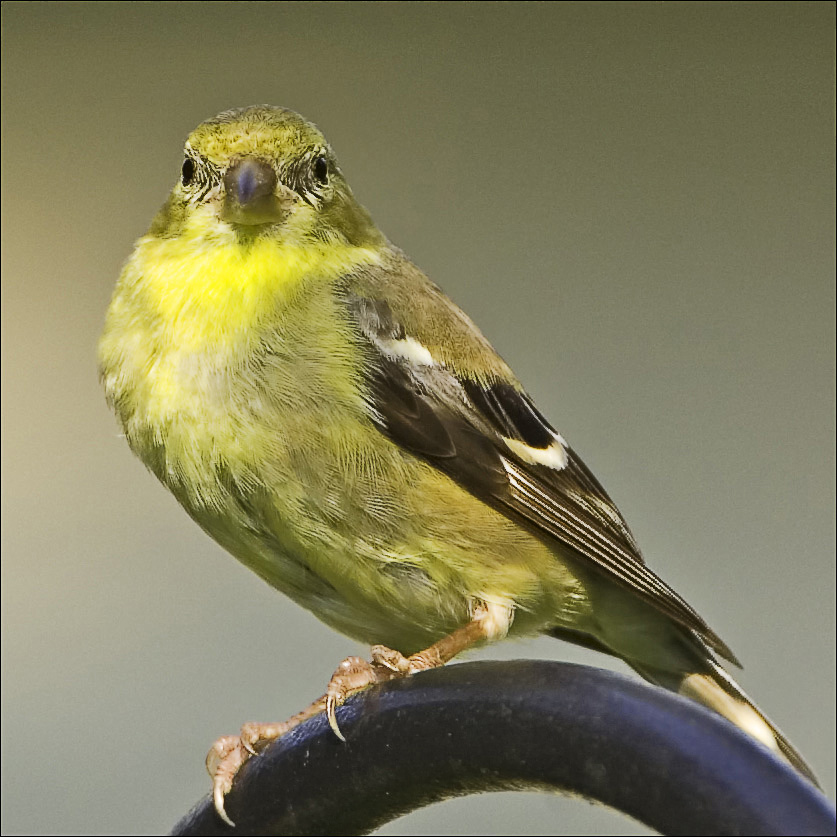
|
A Goldfinch close up
|
Several more Goldfinch views. I'm pleased with the resolution and detail of these images.
A female Goldfinch waiting to get to the feeder
|
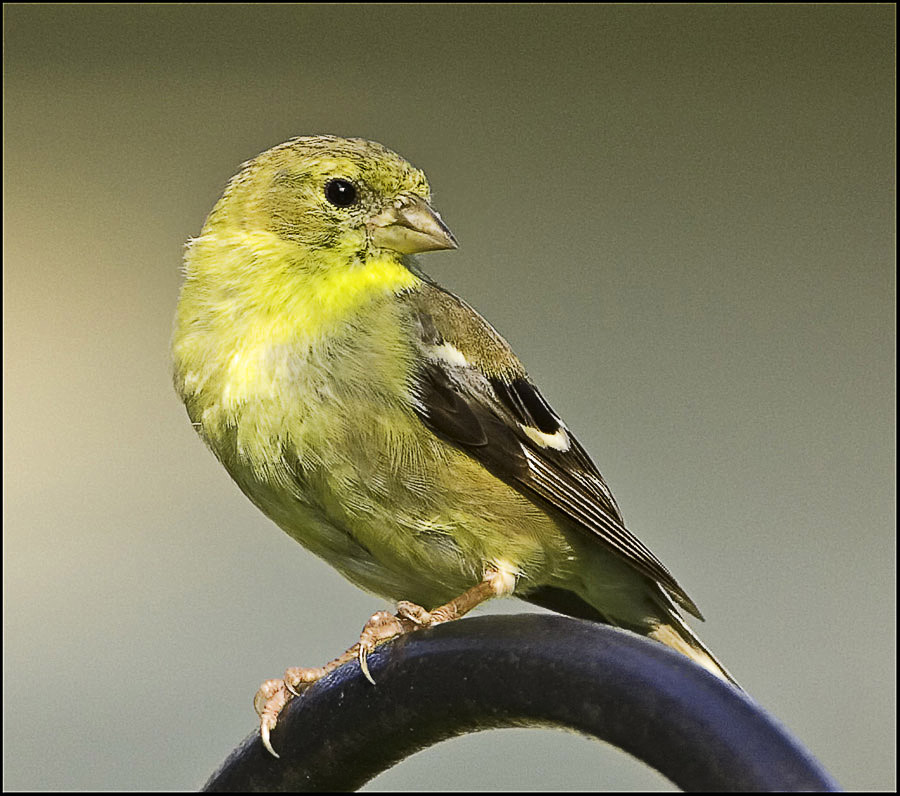
|
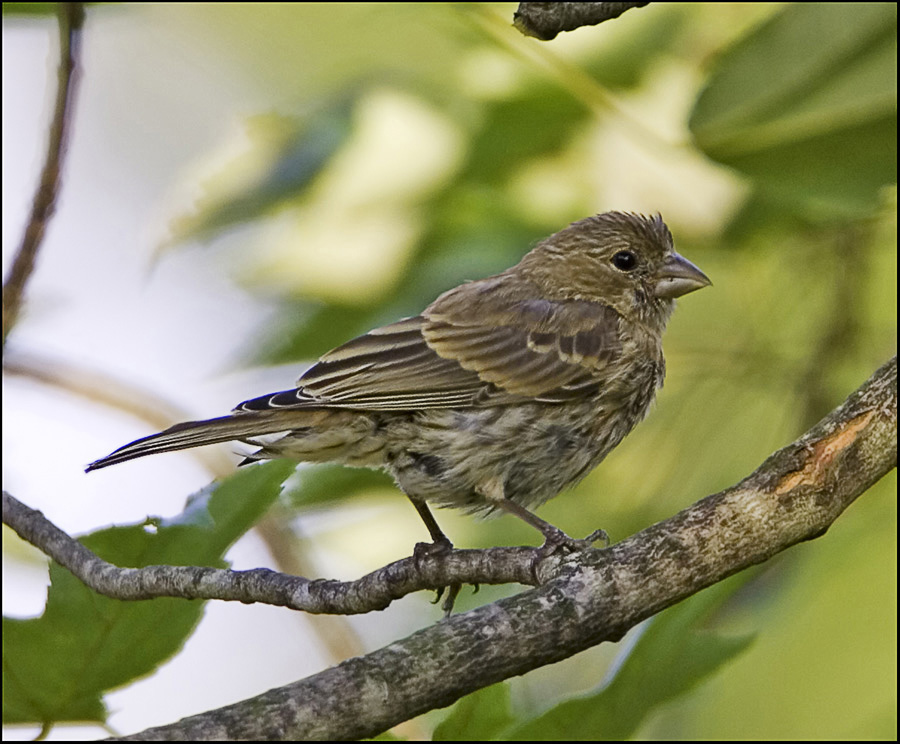
|
Another Sparrow close up
|
Several more Sparrows views. I'm happy with the resolution of these images as well as my skills improve.
The detail in these photographs is outstanding in my (humble) view.
A perched backyard Sparrow
|
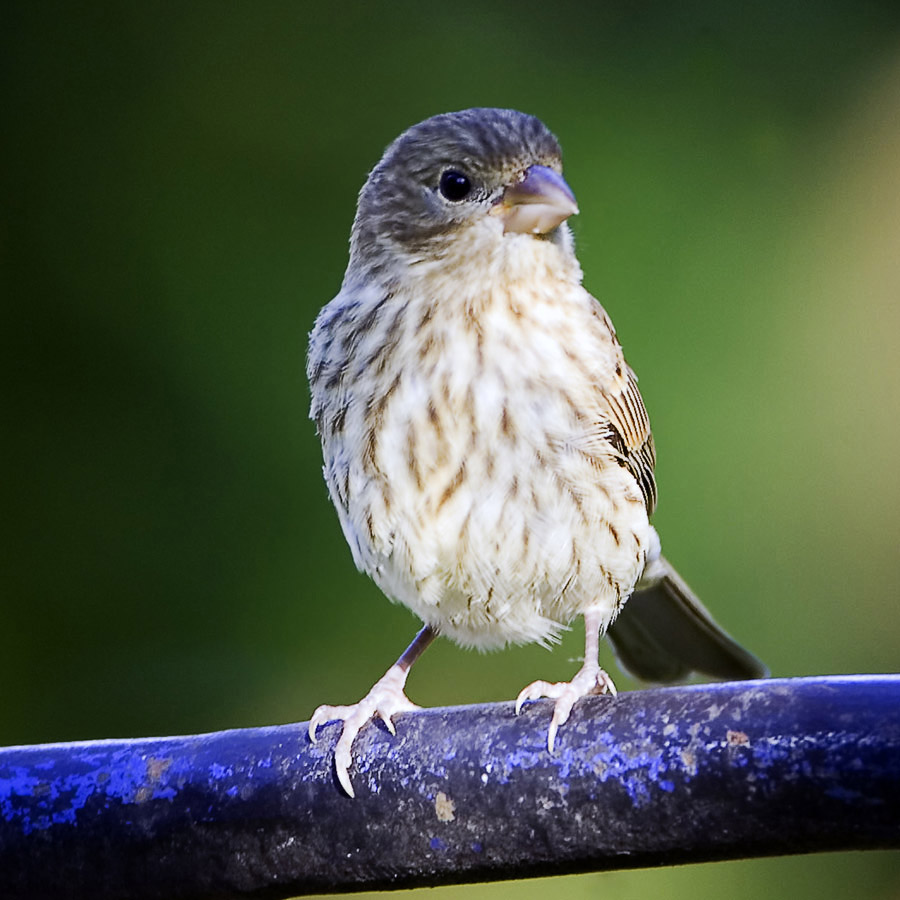
|
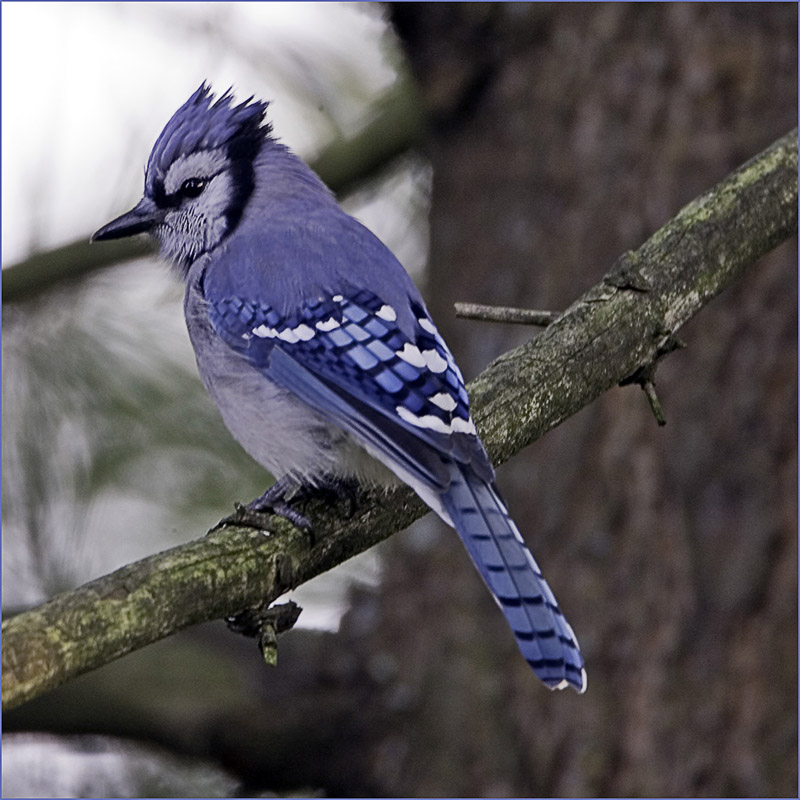
|
We've had a new group of Bluejays coming around this fall; this is one of the family
|
Last but not least of the September 2006 group, this Robin photograph is one of my personal favorites.
I'd attempted to image these birds eating the plethora of berrys on this tree; the photograph below represent the first sucessful image.
I was able to obtain this young Robin shot without motion blur as the bird was feeding. They often pluck a berry, hold it momentarily in their beak, flip
it up, catch & gobble it down. This can make capturing the moment difficult in low light conditions.
All shots were taken with my Canon 5D camera and enhanced in Photoshop CS2. I use
Pixel Genius
programs, especially for sharpening, when working with my images.
A note about the photography...All images in this account are by the author.
Any images viewed that are digitally framed and labeled have been printed at approximately 16"X20" or an appropriate size for the photograph
and added to my collection of works for sale.
These are displayed when at shows and events either packaged on foam core, professionally framed or ArtiPlaq™ mounted as a final for purchase.
The web versions are nice, but a full
resolution print significantly enhances the beauty of these images; all are ©2005-2006 Photography by Kirk M. Rogers - any
reproduction, publication or transmission of this content without the written consent of the author is prohibited.
Please contact me should you have an interest in obtaining any of the images.
|

